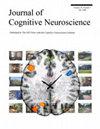德尔塔波段活动是代词解析过程中指称意义表征的基础
IF 3.1
3区 医学
Q2 NEUROSCIENCES
引用次数: 0
摘要
人类语言提供了多种创造意义的方式,其中之一就是指称世界上的实体、物体或事件。其中一种意义生成方式就是理解话语中的代词指代谁或指代什么。要理解一个代词,大脑必须从以前的语言环境中获取编码在记忆中的匹配实体或概念。语言处理模型认为,通过外源线索(如单词的语音输入)获取的内部存储的语言概念,在特定频段活跃的神经元群中表现为(a)同步活动。越来越多的证据表明,δ波段活动(1-3赫兹)参与了句子加工过程中的时间和表征整合。此外,记忆神经生物学的最新研究进展表明,回忆时的神经动态与记忆编码时的神经动态相似。综合这两个研究方向,我们在此测试了一个假设,即神经动态模式,尤其是在 delta 频率范围内,作为指代意义表征的基础,会在代词解析过程中得到恢复。通过利用神经解码技术(即表征相似性分析)对自然故事聆听任务中获得的脑磁图数据集进行分析,我们提供了δ频段活动是指代意义表征基础的证据。我们的研究结果表明,在口语理解过程中,指代概念等内源性语言表征可能会通过激活其潜在的动态神经模式而被主动检索和表征。本文章由计算机程序翻译,如有差异,请以英文原文为准。
Delta-band Activity Underlies Referential Meaning Representation during Pronoun Resolution
Human language offers a variety of ways to create meaning, one of which is referring to entities, objects, or events in the world. One such meaning maker is understanding to whom or to what a pronoun in a discourse refers to. To understand a pronoun, the brain must access matching entities or concepts that have been encoded in memory from previous linguistic context. Models of language processing propose that internally stored linguistic concepts, accessed via exogenous cues such as phonological input of a word, are represented as (a)synchronous activities across a population of neurons active at specific frequency bands. Converging evidence suggests that delta band activity (1–3 Hz) is involved in temporal and representational integration during sentence processing. Moreover, recent advances in the neurobiology of memory suggest that recollection engages neural dynamics similar to those which occurred during memory encoding. Integrating from these two research lines, we here tested the hypothesis that neural dynamic patterns, especially in delta frequency range, underlying referential meaning representation, would be reinstated during pronoun resolution. By leveraging neural decoding techniques (i.e., representational similarity analysis) on a magnetoencephalogram data set acquired during a naturalistic story-listening task, we provide evidence that delta-band activity underlies referential meaning representation. Our findings suggest that, during spoken language comprehension, endogenous linguistic representations such as referential concepts may be proactively retrieved and represented via activation of their underlying dynamic neural patterns.
求助全文
通过发布文献求助,成功后即可免费获取论文全文。
去求助
来源期刊
CiteScore
5.30
自引率
3.10%
发文量
151
审稿时长
3-8 weeks
期刊介绍:
Journal of Cognitive Neuroscience investigates brain–behavior interaction and promotes lively interchange among the mind sciences.

 求助内容:
求助内容: 应助结果提醒方式:
应助结果提醒方式:


